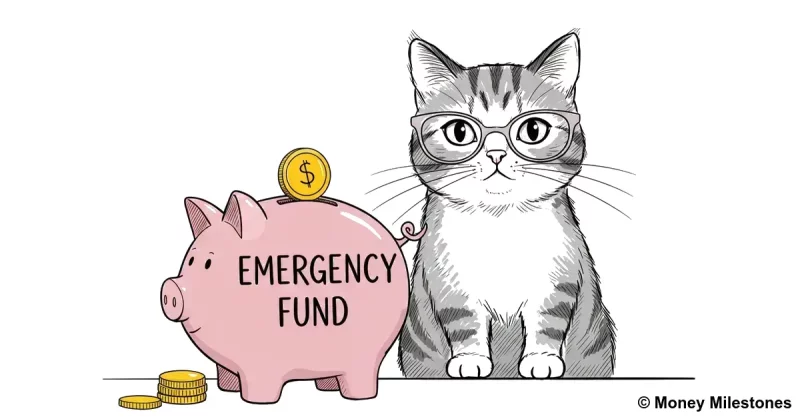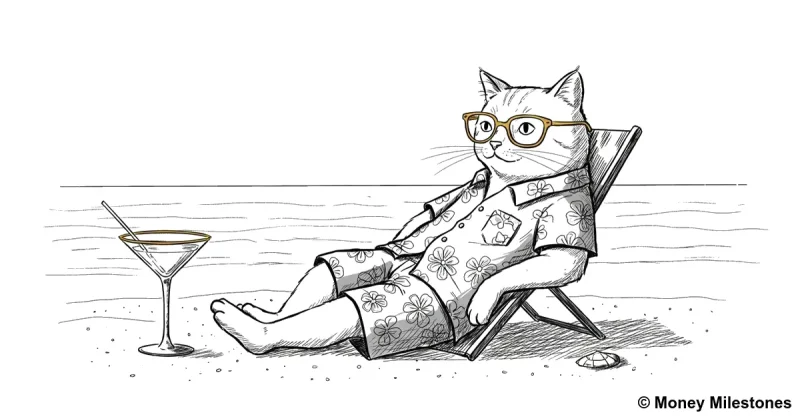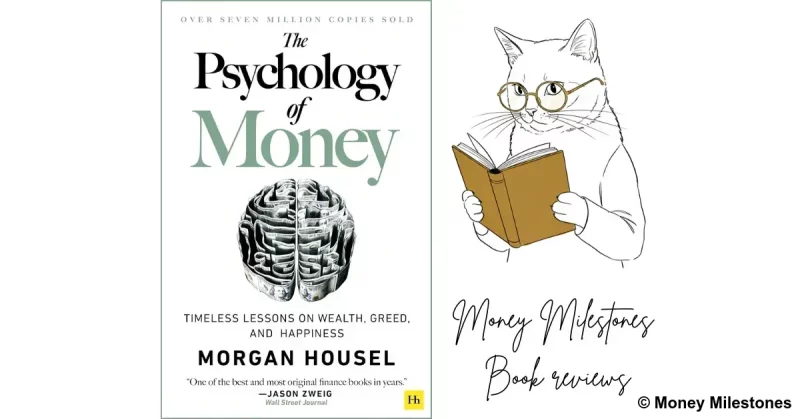Should I save or invest? The key to making the right choice
If you’ve got some spare cash or can set aside a bit of money each month, you might be wondering: should I save or invest? Ask around, and you’ll get different answers. Some will say you should keep everything in a savings account, while others will suggest investing in stocks or even crypto. With so many choices, how do you decide the best option for your financial future?
The one money rule you should always follow
Before answering this question, I’d like to share my personal golden rule when it comes to money: never follow anyone’s advice or opinion blindly (including mine). In my experience, many people make poor financial decisions without even realising it. And even if they don’t, your personal circumstances are likely different from theirs: what works for them might not work for you and could even have negative consequences.
The best thing you can do is take ownership of your financial decisions. Understand your options and choose for yourself. With that in mind, let’s jump in!
Should you save or invest? Here’s how to decide
In this article, I’ll assume you have a readily available sum of money, let’s say £1,000. If you don’t have savings but can set aside a fixed amount each month, your options remain the same, though the calculations will differ. So, what should you do with your £1,000? Let’s explore your two main options: saving or investing.
The basics of saving: How to grow your money safely
Saving means storing your money in a savings account at a financial institution, such as a bank or building society, which pays you interest in return. For example, if you deposit £1,000 into a savings account with a 4% interest rate on 1st January, you’ll have £1,040 by 31st December, assuming you don’t add or withdraw any money during that time.
If you know your interest rate and time horizon, you can use my savings and investment growth calculator to see how your savings could grow over time.
There are many types of savings accounts, but the key point is that your capital is guaranteed: you cannot lose your money, no matter what. If you’re in the UK and your bank or building society is covered by the FSCS (if it’s not, run away!), your money is protected up to £85,000, even if the institution goes bust. You can check if your money is covered here. In this sense, saving is by far the safest option.
So, what’s the catch? Interest rates, the rate at which your money grows, are usually quite low. In fact, they rarely outpace inflation, meaning your savings may lose purchasing power over time.
The basics of investing: Understanding risk and reward
Alternatively, investing means using your money to buy a stake in a company or group of companies (stocks and indices), lend money to governments or businesses (bonds), or invest in physical assets like gold or wheat (commodities). You can also invest in cryptocurrencies and other assets.
Unlike saving, investing does not guarantee your capital. If the company you invested in or the government you lent money to goes bankrupt, you could lose some or all of your money. Similarly, if you buy oil just before a major producer (such as Saudi Arabia) announces an increase in production, the value of your investment could drop significantly.
The same applies to all other forms of investing: it’s inherently risky. However, the potential returns are often much higher than with saving. It’s also important to note that not all investments carry the same level of risk. For example, government bonds are generally considered safer than stocks, which are, in turn, seen as safer than cryptocurrencies.
So, should I save or invest? To answer that, ask yourself two key questions:
- When will I need my money?
- How much risk am I willing to take?
Should you save or invest: When will you need your money?
This is crucial because investments are volatile. People buy stocks, bonds, commodities, and other assets with the hope that their value will increase over time (though, again, this is not guaranteed). However, these investments don’t follow a predictable path: they fluctuate constantly, and it’s nearly impossible to predict where they’ll go next.
The idea behind buying stocks, bonds, and other assets and holding onto them for a long period is that it can smooth out the fluctuations and reduce the impact of those unpredictable variations. That’s why most experts recommend investing your cash only if you don’t need it for at least a few years.
How long? Well, it depends on who you ask. Some experts recommend 3 years, others suggest 5 years, and a few advise 10+ years. However, if you know you’ll need the money within the next few years (for example, to buy a house) then you should think twice before investing.
Should you save or invest: How much risk are you willing to take?
The other crucial question to consider is the amount of risk you’re willing to take with your money. This is often trickier than it seems, as people are often drawn to the potential for high returns without fully considering the possibility of losing most or all of their money.
If you invest your money over a long period, you will almost certainly experience times when your investments drop significantly, sometimes for years, or even permanently. Sure, you might earn a lot, but you could also lose a lot. Could you afford to lose everything? How would you handle that? And how would it affect your mental health? Answering those questions will, in turn, help you decide whether you should save or invest.
The highs and lows of investing: A cautionary tale
A young investor’s dream: the £10,000 gamble
Imagine it’s November 2007. Eric, a young professional just out of university, plans to buy his first house in a few years. His parents give him £10,000 and advise him to invest it in the S&P 500, an index that tracks the performance of the top 500 companies in the US. After all, Eric’s cousin did the same five years ago and nearly doubled his investment. “I could have £20,000 by 2012 and be in a position to pay the deposit for my dream house!” he thinks. So, Eric follows the advice and invests his entire £10,000 in the S&P 500 index.
The market turns: doubt creeps in
By January, he starts feeling uneasy. His investment has dropped to £9,300. Still, he reminds himself that market fluctuations are normal and that panicking and withdrawing now would only lock in his losses. So, he decides to wait. By July, after months of market ups and downs, Eric feels drained. His investment is now worth £8,550.
Eric reads the newspapers every day, searching for guidance. Every expert seems to have a different opinion: some believe the worst is over, while others warn that it’s just beginning. His dream of buying a house feels more distant with each passing day. Still, he chooses to stick to his plan.
Panic and loss: when fear takes over
Fast forward to February 2009. Eric’s initial £10,000 has shrunk to just £4,960, less than half its original value. He barely sleeps at night, and panic attacks have become a daily struggle. “I’ll never be able to buy that damn house anyway. I should do the sensible thing and stop this madness” he thinks. Unable to take it any longer, he withdraws all his money, locking in a huge loss.
Could you handle the pressure?
Take a moment to think about this: what would you do if you were in Eric’s shoes? Be as honest as possible with yourself, because if you invest over the long term, you will face a financial crisis at some point. You will almost certainly experience stress and anxiety that tempts you to withdraw your money, even at a significant loss.
This is what it truly means to make a high-risk investment, and it’s something most people ignore until they experience it first-hand. Could you handle it? There’s no shame in choosing not to invest if you feel it would be too much for you.
What if Eric had stayed invested?
If Eric hadn’t sold, his investment would have been worth £9,560 by November 2012, still a loss after five years. But had he waited another five years, it would have grown to £17,880, an impressive 78.8% increase from his original investment. And if he had held on until today, his investment would be worth close to £40,000. That’s four times its original value, far outpacing inflation.
The figure above illustrates the trajectory of Eric’s investment value, including its potential growth had he not sold in February 2009. The red vertical line marks the point at which he exited the market. The data, based on S&P 500 fluctuations from November 2007 to April 2025, is for illustrative purposes only.
But in February 2009, when Eric decided to sell, he had no way of knowing what would happen next. His £4,960 investment could have dropped even further or remained low for decades.
Some investments never recover at all, while others skyrocket and make their investors wealthy, just as this one eventually did. The key point is that there’s no way to predict the outcome with certainty. This is why investing is considered risky, or even highly risky for some assets, such as cryptocurrencies. On the other hand, the potential returns can be extremely high.
Should you save or invest: Making the right choice
Choosing between saving and investing is a personal decision that depends on how long you’re willing to lock your money away and how much risk you’re comfortable taking.
It’s also important to note that if you work in the UK, you likely already have money invested in bonds, stocks, and potentially other assets through your workplace pension or SIPP, as explained in my article on workplace pensions.
My hope is that this article has helped you feel more empowered in making better financial decisions. Stay tuned for more articles on personal finance!
Note: For simplicity, I’ve omitted variations in the GBP ↔ USD exchange rate in this article.







